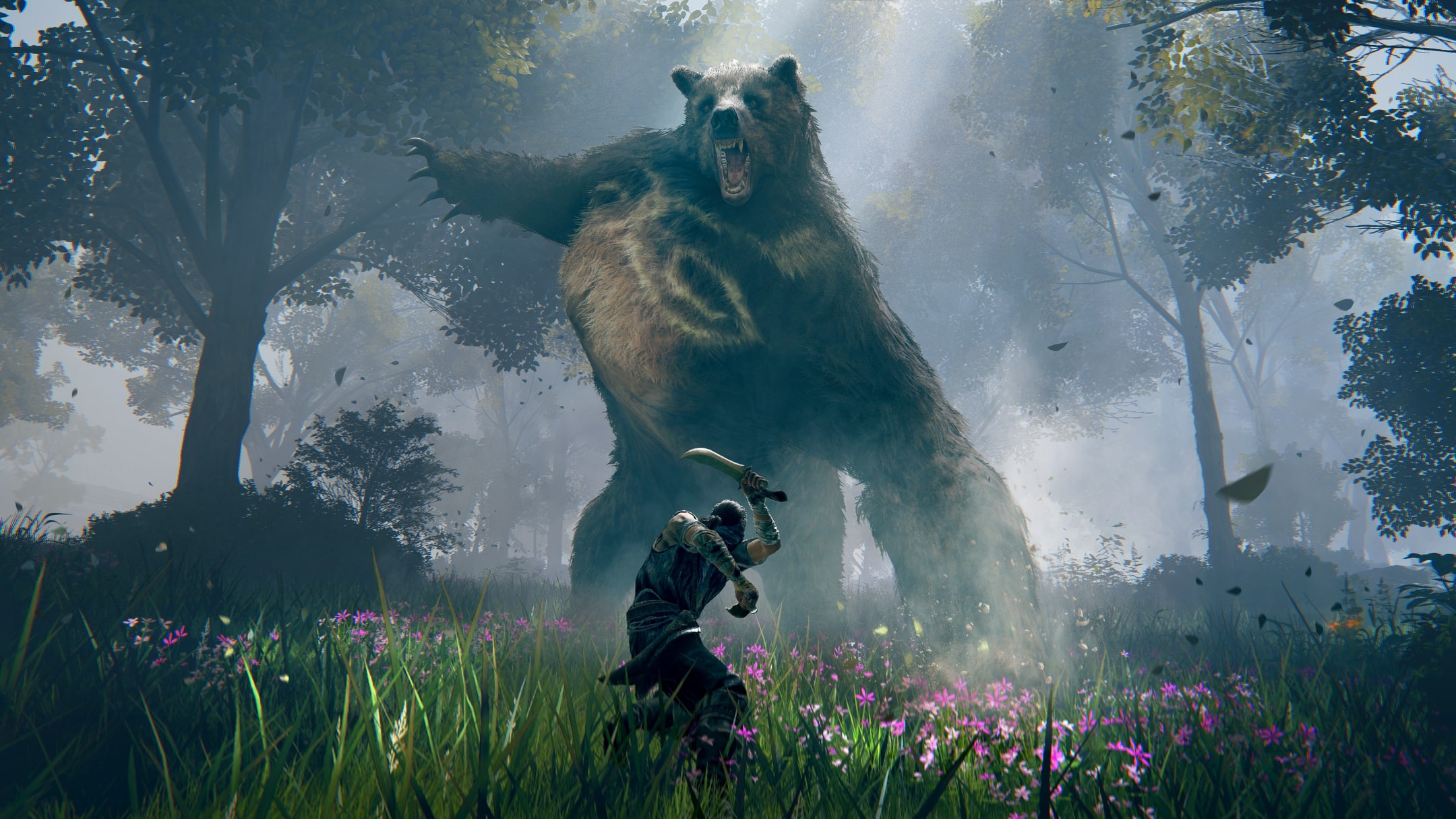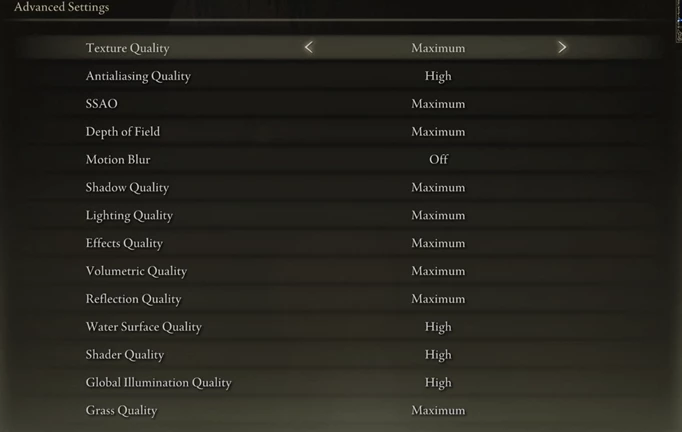
amd radeon rx 580 fps fortnite
Our Elden Ring best settings will ensure your game runs as smoothly as possible on PC, meaning you can boost your FPS and hopefully get rid of the stuttering which is plaguing the PC version currently. Elden Ring's PC port is an improvement on the FromSoftware ports of the past and should be fine for the majority of players - but you can always do some tuning to make things even better. So if you need to know what the Elden Ring best settings are for improving your FPS on PC, we've got you covered.
- Once you get into the game, check out our breakdown of the Elden Ring Golden Seeds, which are one of the most important items on your journey.
Elden Ring Best Settings: System Requirements
Firstly, you should check whether you have the minimum or recommended hardware for your system, as this will have a big impact on your overall performance and what kind of settings you should be running at. Here are the officially listed hardware requirements for PC players:
Minimum
- OS: Windows 10
- Processor: INTEL CORE I5-8400 or AMD RYZEN 3 3300X
- Memory: 12GB RAM
- Graphics: NVIDIA GEFORCE GTX 1060 3GB or AMD RADEON RX 580 4GB
- DirectX: Version 12
- Storage: 60GB Available
- Sound Card: Windows Compatible Audio Device
Recommended
- OS: Windows 10/11
- Processor: INTEL CORE I7-8700K or AMD RYZEN 5 3600X
- Memory: 16GB RAM
- Graphics: NVIDIA GEFORCE GTX 1070 8GB or AMD RADEON RX VEGA 56 8GB
- DirectX: Version 12
- Storage: 60GB Available
- Sound Card: Windows Compatible Audio Device
As an open-world title, your CPU and RAM are going to be tested the most when playing Elden Ring, and during moments when the screen is busy with enemies, it can chug. More closed-in areas like legacy dungeons and the underground dungeons shouldn't give you quite as much trouble, but with the current stuttering issues that still haven't been fixed with multiple patches - don't be surprised if the game still isn't running at its best. It's also worth noting that the game has an FPS cap of 60 - much like previous From games - which is frustrating, but if you weren't aware initially, now you know why the game won't reach higher frame rates.
If you're trying to hit a consistent 60 FPS at 1080p with the max settings, the recommended specs are mostly fine, though the GPU is a little on the lower end, so if you're rocking an Nvidia Geforce GTX 1070 8GB, you may have to turn some settings down - the specifics of which we will get to in the next section. For higher resolutions, the GPUs above won't cut it, and something from the Nvidia 3000 series is a much better option. In terms of CPUs, the system requirements seem to overstate them a little, and as long as you have good threading on your CPU, the game shouldn't cause you too many issues.
When it comes to tinkering with the settings, your main goal should be to reach the highest consistent frames possible. This will ensure combat goes smoothly, and your dodges are as effective as possible, as every frame can mean life or death in most encounters.
- The Elden Ring Stakes of Marika are a new feature in the Souls-like genre, letting players respawn at more points.
Elden Ring Best Settings: What Settings To Change?


There are a few settings worth changing, though not all of them will make large differences to your frames. You can also choose from four presets: Maximum, High, Medium, and Low. Due to the ongoing issues with performance on PC, and the lack of people who actually have graphics cards that are suitable for the best settings, we recommend testing the game with High to begin with and seeing if you can push things higher.
You'll want to do some tinkering with the individual settings first though:
Texture Quality: This can be quite an impactful setting for most players and should squeeze a few extra frames out of your rig by lowering it to Medium.
Antialiasing Quality: This setting will smooth the edges of objects and environments. The higher your resolution, the lower this should be because of the frame hits, but at 1080p, keeping it on high shouldn't hit performance too much.
SSAO: This is a shadowing technique used on 3D objects to make them more realistic, and lowering this will give you a performance boost while having little effect on the visual quality of the game.
Depth of Field: This is mainly down to personal preference, and it's not been shown to have much of a performance impact either way.
Motion Blur: This is another setting that won't make much of a difference, but your eyes will naturally blur while playing anyway, making this redundant.
Shadow Quality: Turning this down to high or medium can give you a small improvement in performance, but beware that it causes a flickering effect on trees and foliage that can be distracting.
Lighting Quality: This hasn't been shown to make a large difference to performance, so it can be kept on the higher side for most players.
Effects Quality: The difference between high and low effects is quite stark from a graphics standpoint, and the performance gain is insignificant, so you can leave this higher too.
Volumetric Quality: Once again, the performance gains aren't noticeable, so you can keep this higher.
Reflection Quality: Reflections again don't seem to make much of a difference to your performance.
Water Surface Quality: In areas with lots of water, this may be worth turning down slightly, but for the most part it is inconsequential to performance.
Shader Quality: Turning this down to medium should net you a worthwhile performance gain in most areas, and it doesn't sacrifice the quality by a huge margin.
Global Illumination Quality: Like the other lighting settings, this is worth keeping on the higher side.
Grass Quality: Turns out that grass is one of the biggest resource hogs, and lowering this as much as you can, should give you a nice performance boost of several frames.
As all PCs are different, the only way to get the best performance out of your computer is to test different settings yourself and compare, but the above advice should give you a good place to start when optimizing. The main settings you'll want to turn down are the textures, SSAO, shadows, shaders, and grass, giving you a solid performance boost, especially for computers that don't quite reach the recommended specs. Keep an eye out for future patches which should hopefully fix some of the ongoing issues.
That's all for our breakdown of the Elden Ring best settings, and now you should have an idea of how to get the best performance in-game.
If you're wondering about the Elden Ring length, and what kind of game time you can get out of it, we've got you covered.